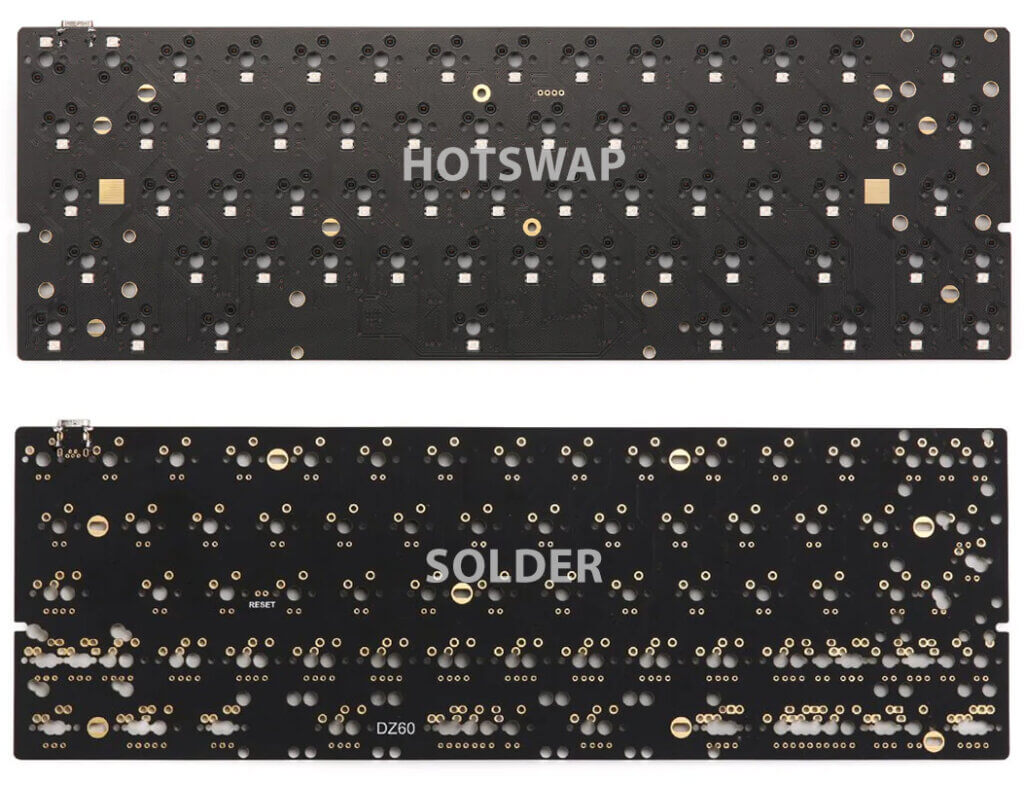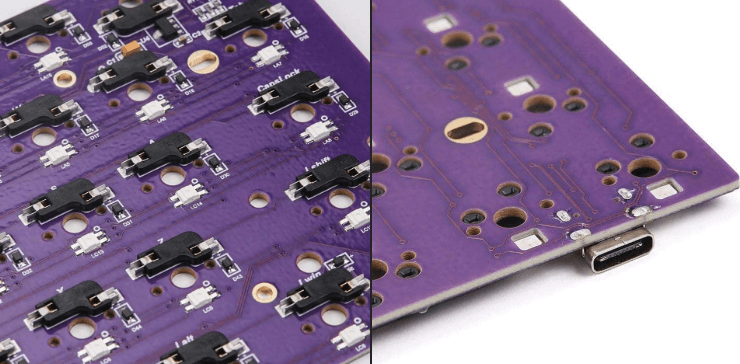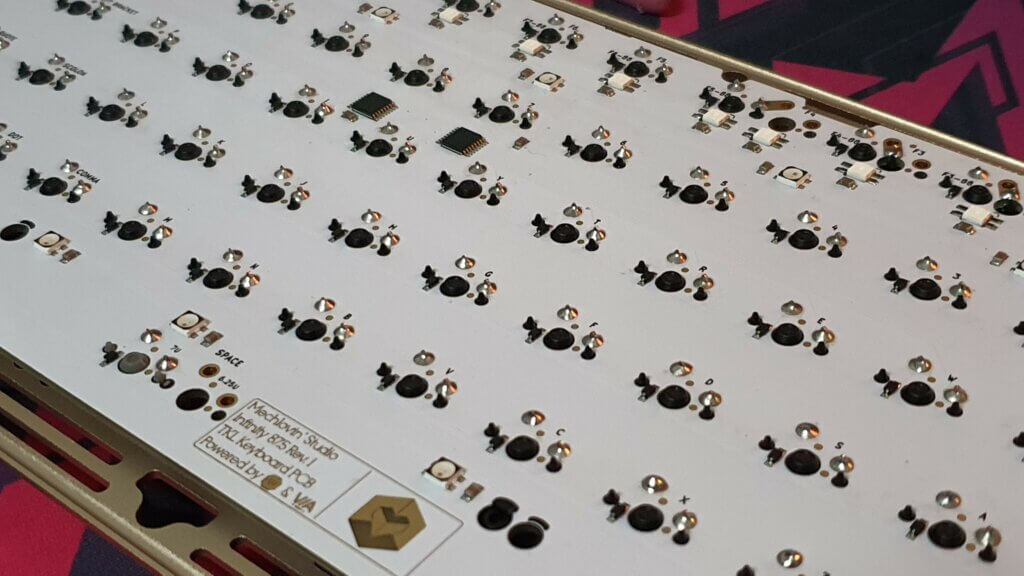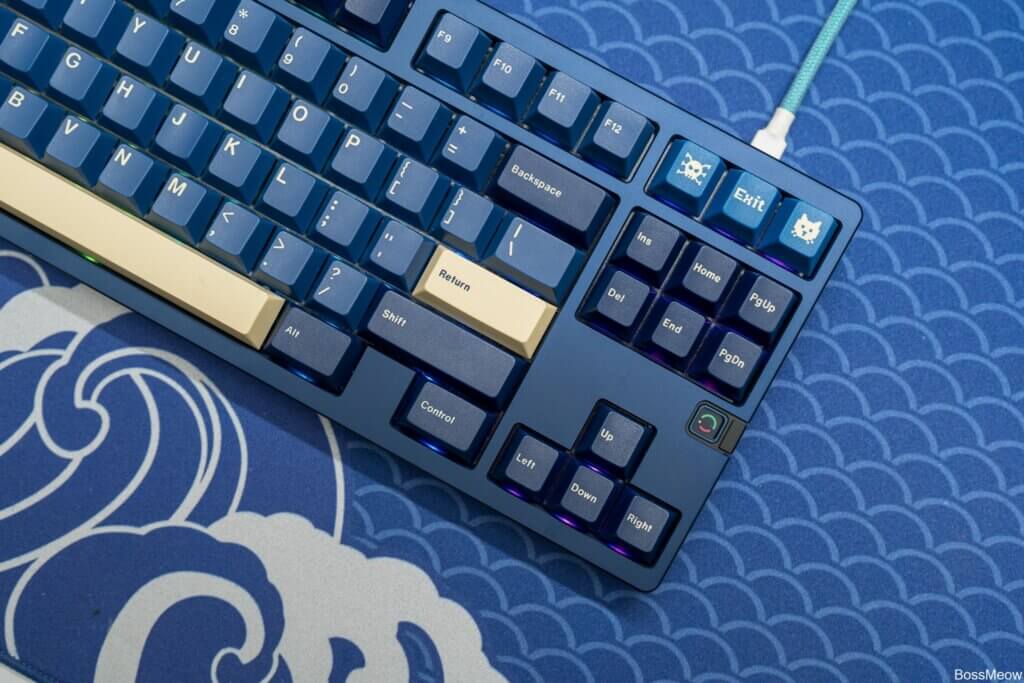The whole mechanical keyboard community is constantly arguing what makes the ideal keeb. Even though keyboards are an intricate device composed of many components, the printed circuit board (PCB) is undoubtedly one of the hottest topics. It is responsible for how the switches are attached and detached.
In the following article, we will join the discussion by comparing hot-swap with soldered keyboard to see which one is better.
Summary
Hot-swap keyboards have switches that are connected through sockets, which makes them easily customizable.
On the other hand, soldered keyboards have switches that are held together with solder, providing the joy of building something huge, greater stability and more layout options.
If you want to experiment with different switches, then hot-swap keyboards are definitely the way to go.
Hotswap Keyboards
Soldered Keyboards

Soldered Keyboards Vs. Hot-Swappable Keyboards
- Hot-swappable keyboards feature swappable mechanical switches that are easily disengaged and reattached by hand or with a switch puller tool.
- Soldered keyboards feature individual mechanical switches directly soldered to the PCB, necessitating the use of a soldering iron to replace them.
Hot-swappable and soldered PCBs offer two distinct styles of keyboard assembly.
Whichever assembly method you’ve chosen, there are further considerations to ponder before selecting the perfect keyboard. Don’t worry though, as we’re here to guide you through the process. If you’d like to keep learning, check out our information about Cherry MX switches.

Easy of Use
It’s undeniable that hot-swap sockets make the installation process of a keyboard much simpler than solder. This is because it’s easy to make an irreversible mistake with a soldering iron if you have limited experience with the tool, so it’s best to opt for a hot-swap option.
Having said that, those with a little know-how with the soldering iron shouldn’t be daunted by the installation process.
For those who are unfamiliar with soldering, it’s strongly advised to choose a hot-swap keyboard.
Switch Diversity
The type of switch you pick can depend on what you plan to use your keyboard for: gaming or typing-based functions. As such, there is an immense variety of keyboard switches available.
Hot-swappable models are an excellent choice for those who want to try out different types of switches since it is a fast and uncomplicated process.

On the other hand, if you want to use a soldered PCB, you must go through a more intensive process. This includes setting up the device, taking apart the board, and doing the actual installation. It can be a lengthy procedure, and it does not support switching out switches easily.
Remember that repeatedly removing and replacing switches on a hot-swap board can weaken the sockets and, if done too often, cause permanent harm to the keyboard.
Layout Variety
Hot-swap keyboards take up more room per key, so manufacturers usually didn’t make a wide variety of these types of boards before. Soldered models were found in a huge selection of shapes and sizes.
However, since the recent years, the mechanical keyboard market is exploding like crazy, and hotswap keyboards have already covered almost all sizes.
If you’d like to learn more about the different styles and their benefits, we have an in-depth article on the topic: All keyboard layouts.

Stability
The hot-swap apparatus tends to wear down over time, resulting in switches falling out. In order to increase durability and security, a soldered PCB is typically a better choice than a hot-swappable model as it has a longer lifespan.
This is also why most of the top-tier keyboards are soldered.

Why the most advanced users like soldered keyboards?
- Soldered keyboards provide a better stability, as mentioned earlier.
- They love putting time, effort, and all of the best parts together to build up the dream keyboard.
- They enjoy the time and effort spending for soldering and assembling.
What is better, Hotswap or soldered keyboard?
When it comes to deciding between hot-swap and soldered keyboards, it all comes down to your preferences and experience.
If you are new to mechanical keyboards, we suggest opting for hot-swap as they are especially user-friendly and will help you identify your switch preferences.
On the other hand, if you have some soldering experience and are looking to make your build extra special, then soldered keyboards are the way to go, as they provide more layout options.
Don’t worry though if you eventually want to convert from soldered to hot-swap later – it can be done.
Read more: How to solder keyboard!
Can I mod normal keycap to become hot-swappable?
If you’re looking for the convenience of hot-swapping switches but are restricted to only soldered PCBs, fear not!
Mill-max sockets are an excellent alternative and are widely regarded as just as reliable as standard Kailh hot-swap sockets. Though manufacturers won’t offer this option as part of their keyboard kits, it’s a great project for those looking to get their hands dirty.

However, we do suggest seeking the help of a more experienced keyboard builder if you’re going for a high-end build.
FAQs
Is a hot-swappable keyboard better for typing?
Hot-swap keyboards simply offer more flexibility to switch between different switch types. It does not necessarily improve typing or gaming performance.
Are all hot-swappable keyboards the same?
No, hot-swappable keyboards can be designed to accommodate a 3-pin switch or a 5-pin switch. Make sure to check the specs before making a purchase.
How can I tell what type of switches are compatible with my hot-swap keyboard?
The main thing to consider is how many pins the switches have and whether it matches the keyboard.
Conclusion
For those new to the world of mechanical keyboards, hot-swappable boards are a great way to go as they allow for easy testing of different switch types.
On the other hand, for those with a bit more experience and knowledge of their desired switch type, soldered boards offer greater convenience.
Ultimately, the decision between the two comes down to whether you’re comfortable with soldering and how often you plan to switch out your switches.
